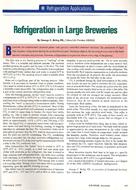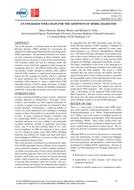Click here to purchase
Fenestrations alone are responsible for 2.15 Quads 733 (TWh) of heating energy consumption and 1.48 Quads 434 (TWh) of cooling energy consumption in U.S. buildings. Fenestrations also impact daylighting and occupant comfort; ideally, they should help provide sufficient daylighting, while minimizing energy use while not negatively affecting occupant comfort. Dynamic shading is an excellent means for optimally balancing these needs given the dynamic nature of weather variables effecting the built environment. However, most dynamic shading studies are conducted using modeling only and most focus on the south orientation. As such, three different types of motorized shading devices: two roller shades and one venetian blind were tested in a full-scale commercial office building laboratory in three different orientations: east, west and south. Testing included the use of two identical parallel rooms in each of orientation from March to September 2017. One test room in each orientation was measured as the baseline with no shading device and no lighting control, while the other utilized dynamic shading and electric lights, controlled based on feedback from an exterior irradiation sensor and an interior illuminance sensor. Two different control strategies were used for each type of shading devices. Cooling and lighting energy consumption for each of the test rooms were measured and used to calculate energy savings potential of the dynamic shading application. Daylighting performance was also evaluated using three different interior illuminance sensors placed at different distance from the window and visual comfort was assessed based on measured vertical illuminance. This study will include a broad overview of the dynamic shading testing methods used, challenges and problems encountered with the full-scale implementation of these devices, and lessons learned and best practices for others seeking to utilize these devices in full-scale or real-world environments.
Citation: 2019 Annual Conference, Kansas City, MO, Conference Papers
Product Details
- Published:
- 2019
- Number of Pages:
- 8
- Units of Measure:
- Dual
- File Size:
- 1 file , 3.4 MB
- Product Code(s):
- D-KC-19-C037


